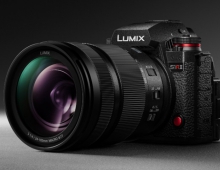
Panasonic to Start Commercial Shipment of 32nm System LSI For Blu-ray Players
Panasonic has successfully developed a new mass-production technology for leading-edge 32-nm generation system LSIs, and is ready to ship system LSIs (model number: MN2WS0150) based on this technology from October 2010 for use in Blu-ray Disc players.
This technology enables system LSIs with higher performance and lower power consumption to be used for consumer electronics including digital TVs, Blu-ray Disc recorders and players.
Panasonic claims that its new echnology for fabricating high-k/metal gate transistors in a gate-first process can significantly improve CMOS transistors' performance by up to 40% compared to its current models. The MN2WS0150 system LSI, featuring 32-nm generation transistors and Panasonic's proprietary UniPhier integrated platform for digital consumer electronics, is designed for Blu-ray Disc players which are compatible with Blu-ray 3D discs. The newly-developed technology enables reducing LSI's power consumption by approximately 40% and the mounting footprint by 30% compared to the current models by employing high-density integration of the microscopic transistors and power consumption control according to the LSI's operations.
 Panasonic's advanced 32-nm generation system LSI's have been realized based on the following technologies:
Panasonic's advanced 32-nm generation system LSI's have been realized based on the following technologies:
1. New CMOS process technologies (jointly developed with Renesas Electronics) for multi-Vth based on new gate structure forming technologies employing hafnium (Hf)-based high-k gate dielectrics and metal gate electrodes, and microscopic Cu wiring technologies using ELK (extremely low dielectric constant) dielectrics that reduce signal delay on wires.
2. MPEG-4 MVC (multiview video coding system, an extension to the ITU-T H.264 advanced video coding system) decoding technologies for Blu-ray 3D, HDMI high-speed data transfer circuit technologies, and high-performance and high-speed graphics engine technologies that also support 3D and curved surface drawing.
3. Power-saving circuit technologies that minimize power consumption according to the LSI's operations, such as clock frequency control, supply voltage application/shut-off and high-speed analog/digital mixed signal circuit forming technologies.
Panasonic claims that its new echnology for fabricating high-k/metal gate transistors in a gate-first process can significantly improve CMOS transistors' performance by up to 40% compared to its current models. The MN2WS0150 system LSI, featuring 32-nm generation transistors and Panasonic's proprietary UniPhier integrated platform for digital consumer electronics, is designed for Blu-ray Disc players which are compatible with Blu-ray 3D discs. The newly-developed technology enables reducing LSI's power consumption by approximately 40% and the mounting footprint by 30% compared to the current models by employing high-density integration of the microscopic transistors and power consumption control according to the LSI's operations.
 Panasonic's advanced 32-nm generation system LSI's have been realized based on the following technologies:
Panasonic's advanced 32-nm generation system LSI's have been realized based on the following technologies:
1. New CMOS process technologies (jointly developed with Renesas Electronics) for multi-Vth based on new gate structure forming technologies employing hafnium (Hf)-based high-k gate dielectrics and metal gate electrodes, and microscopic Cu wiring technologies using ELK (extremely low dielectric constant) dielectrics that reduce signal delay on wires.
2. MPEG-4 MVC (multiview video coding system, an extension to the ITU-T H.264 advanced video coding system) decoding technologies for Blu-ray 3D, HDMI high-speed data transfer circuit technologies, and high-performance and high-speed graphics engine technologies that also support 3D and curved surface drawing.
3. Power-saving circuit technologies that minimize power consumption according to the LSI's operations, such as clock frequency control, supply voltage application/shut-off and high-speed analog/digital mixed signal circuit forming technologies.





















